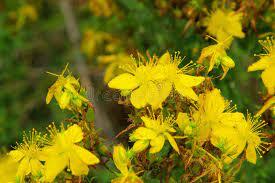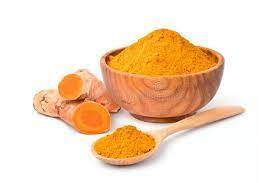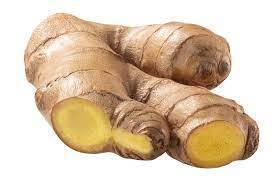Medicinal plants
St. Johns wart
 St. Johns wart
St. Johns wart
St. John's wort (Hypericum perforatum) is a herb that has been traditionally used to treat mild to moderate depression. There have been several clinical studies conducted on the effectiveness of St. John's wort for depression, and the results have been mixed.
One meta-analysis published in the Journal of the American Medical Association in 2002 found that St. John's wort was more effective than a placebo, but not as effective as standard antidepressants in the treatment of mild to moderate depression. Another meta-analysis published in the Cochrane Database of Systematic Reviews in 2008, which included 29 randomized controlled trials, found that St. John's wort was more effective than a placebo and as effective as standard antidepressants in treating mild to moderate depression.
However, a systematic review and meta-analysis published in The Lancet in 2016, which included 34 randomized controlled trials, found that St. John's wort was no more effective than placebo for the treatment of major depressive disorder.
It's worth noting that many of the studies were done on specific extracts of St. John's Wort, like Hyperforin, and the results may not be generalizable to all types of St. John's Wort. Also, more research is needed to understand the specific mechanisms of action, safety and possible interactions with other medications.
Echinacea
 Echinacea purpurea
Echinacea purpurea
Echinacea (Echinacea purpurea) is a herb that has been traditionally used to boost the immune system and reduce the symptoms of colds and flu. There have been several clinical studies conducted on the effectiveness of Echinacea for these uses, and the results have been mixed.
A meta-analysis published in the Journal of the American Medical Association in 2004, which included 14 randomized controlled trials, found that Echinacea reduced the risk of developing a cold by 58% and reduced the duration of cold symptoms by 1.4 days.
Another meta-analysis published in the Lancet Infectious Diseases in 2007, which included nine randomized controlled trials, found that Echinacea reduced the risk of developing a cold by 35%.
However, a systematic review and meta-analysis published in the Annals of Internal Medicine in 2016, which included 24 randomized controlled trials, found that Echinacea did not reduce the risk of developing a cold.
It's worth noting that many of the studies were done on specific extracts of Echinacea, like Echinacea purpurea and Echinacea angustifolia, and the results may not be generalizable to all types of Echinacea. Also, more research is needed to understand the specific mechanisms of action, safety and possible interactions with other medications.
Turmeric
 Curcuma longa
Curcuma longa
Turmeric (Curcuma longa) is a herb that has been traditionally used for its anti-inflammatory and antioxidant properties and to treat a wide range of health conditions, including cancer, arthritis, and heart disease. There have been many clinical studies conducted on the effectiveness of turmeric for these uses, and the results have been promising.
A systematic review and meta-analysis published in the Journal of Medicinal Food in 2013, which included 11 randomized controlled trials, found that turmeric was effective in reducing knee pain and improving function in patients with osteoarthritis.
Another systematic review and meta-analysis published in the Journal of Clinical Gastroenterology in 2016, which included six randomized controlled trials, found that turmeric was effective in reducing symptoms of irritable bowel syndrome (IBS).
A study published in the International Journal of Cancer in 2015, which included over 800 patients with colorectal cancer, found that those who consumed turmeric had a 29% lower risk of colorectal cancer recurrence and a 36% lower risk of death from colorectal cancer.
A study published in the Journal of Clinical Psychology in 2019, that included 60 patients with major depressive disorder (MDD), found that turmeric supplementation significantly reduced symptoms of depression compared to a placebo.
It's worth noting that many of the studies were done on specific extracts of Turmeric, like curcumin, and the results may not be generalizable to all types of Turmeric. Also, more research is needed to understand the specific mechanisms of action, safety and possible interactions with other medications.
Saw Palmetto
 Serenoa repens
Serenoa repens
Saw Palmetto (Serenoa repens) is a herb that has been traditionally used to treat symptoms of an enlarged prostate, such as difficulty urinating and frequent urination. There have been several clinical studies conducted on the effectiveness of saw palmetto for this use, and the results have been mixed.
A systematic review and meta-analysis published in the Journal of the American Medical Association in 2006, which included 18 randomized controlled trials, found that saw palmetto was not more effective than a placebo in improving symptoms of an enlarged prostate.
Another systematic review and meta-analysis published in the British Journal of Urology International in 2010, which included 14 randomized controlled trials, found that saw palmetto was more effective than a placebo in improving symptoms of an enlarged prostate.
A systematic review and meta-analysis published in the Journal of the American Medical Association in 2011, which included 31 randomized controlled trials, found that saw palmetto was not more effective than a placebo in improving symptoms of an enlarged prostate.
It's worth noting that many of the studies were done on specific extracts of Saw Palmetto, like liposterolic extract, and the results may not be generalizable to all types of Saw Palmetto. Also, more research is needed to understand the specific mechanisms of action, safety and possible interactions with other medications.
Ginger
 Zingiber officinale
Zingiber officinale
Ginger (Zingiber officinale) is a herb that has been traditionally used for its anti-inflammatory properties and to treat a wide range of health conditions, including nausea, vomiting, and osteoarthritis. There have been many clinical studies conducted on the effectiveness of ginger for these uses, and the results have been promising.
A systematic review and meta-analysis published in the Journal of Pain in 2016, which included 12 randomized controlled trials, found that ginger was effective in reducing knee pain and improving function in patients with osteoarthritis.
A systematic review and meta-analysis published in the Journal of Alternative and Complementary Medicine in 2016, which included 14 randomized controlled trials, found that ginger was effective in reducing nausea and vomiting caused by pregnancy, surgery, and chemotherapy.
Another systematic review and meta-analysis published in the European Journal of Pain in 2017, which included 11 randomized controlled trials, found that ginger was effective in reducing muscle pain caused by exercise.
A study published in the Journal of Medicinal Food in 2018, that included 74 patients with type 2 diabetes, found that ginger supplementation significantly reduced blood sugar levels, HbA1c and lipid profiles compared to a placebo.
It's worth noting that many of the studies were done on specific extracts of ginger, like gingerols and shogaols, and the results may not be generalizable to all types of ginger. Also, more research is needed to understand the specific mechanisms of action, safety and possible interactions with other medications.
Garlic
Medical uses of garlic
More than 3000 publications in the past have confirmed the efficacy of garlic for the prevention and treatment of a variety of diseases, acknowledging and validating its traditional uses. It may influence the risk of heart disease and is also used for the treatment of fatigue, although the mechanism involved remains unclear. The anti-fatigue function of garlic may be closely related to its many favourable biological and pharmacological effects(Reference NIH). Garlic has historically been used to treat aches and pains, leprosy, deafness, diarrhoea, constipation, parasitic infection and fever and to relieve stomachache(Reference NIH). It has also been used to lower blood pressure, food poisoning, tumours and as a mild anticoagulant(Reference SciELO). Arabian herbalists use garlic to treat abdominal pain, infantile colic, diarrhoea, diabetes, eye infections, snake bites, dandruff and tuberculosis(Reference Ghazanfar). In Ayurvedic medicine, garlic is used to treat respiratory problems, colic and flatulence. Garlic oil drops are used to treat earache(Reference Kapoor). Louis Pasteur demonstrated garlic's antiseptic activity in 1858. In African countries, it is also used to treat dysentery(Reference Peirce). Garlic is commonly used to treat chronic bronchitis, recurrent upper respiratory tract infections and influenza(Reference Barnes, Anderson and Phillipson). In India and Europe, garlic remedies are used to treat coughs, colds, hay fever and asthma(Reference Woodward).
